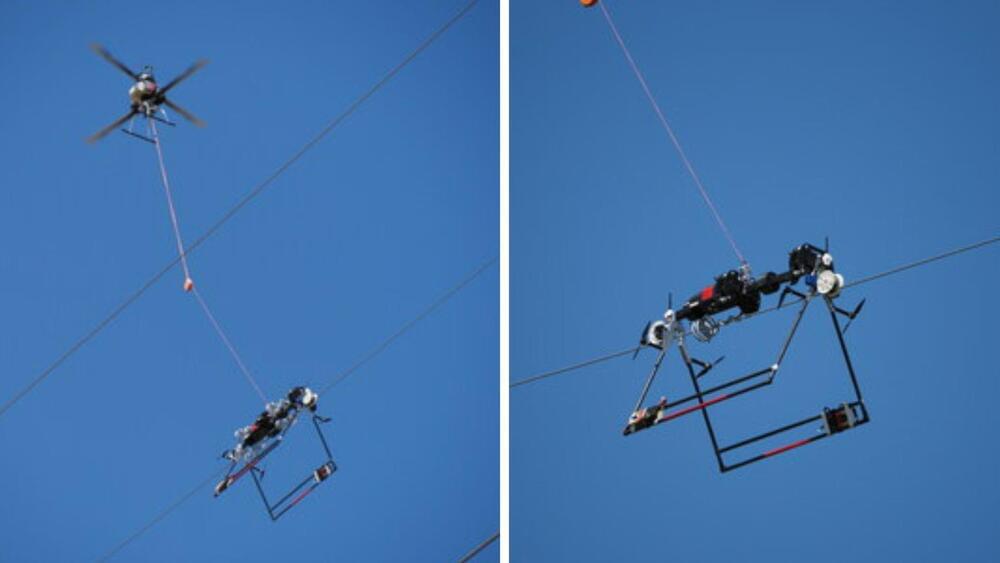SpaceX confirms to the FCC that it’s exploring using its sea-based drone ships to also act as ‘gateways’ for Starlink.


China’s People’s Liberation Army is on the market for robotic special operations robots or UAVs that can operate independently for a long period.
China’s PLA unit 78,092 has publically announced its intention to develop robotic autonomous special operations drones.
Recent technological advances, such as increasingly sophisticated drones and cameras, have opened exciting new possibilities for cinematography. Most notably, film directors can now shoot scenes from a wide range of angles that were previously inaccessible and in far higher resolution.
Researchers at University of Zaragoza and Stanford University recently developed CineMPC, a new cinematographic system that relies on a fully autonomous drone that carries a cinematographic camera to film multiple targets autonomously, while following a director’s instructions. The platform modulates various drone and camera parameters to satisfy these instructions. The team’s innovative system, outlined in IEEE Transactions on Robotics, could bring a wave of innovation to the film industry and other sectors that can benefit from high-quality video footage.
“Existing solutions for autonomous drone cinematography revealed a common oversight, namely, none provided automatic control over camera intrinsic parameters (i.e., focal length, aperture, focus distance),” Pablo Pueyo Ramon, co-author of the paper, told Tech Xplore.

Connecticut-based WaveAerospace recently unveiled a multi-role unmanned multi-copter in development for the last five years.
Huntress Turbojet’s flight tests will take place in the summer and it is expected to be delivery-ready by early 2025.
The all-weather hybrid-electric drone has a top speed of Mach 0.7 (467 knots) and flight endurance of two hours.

The British Antarctic Survey (BAS) said successful tests would allow the drones to undertake research such as surveying marine ecosystems and studying glaciers, while reducing CO2 emissions by approximately 90%.
The Windracers Ultra UAV (uncrewed aerial vehicle) is a twin-engine, 10-metre aircraft that can carry up to 100kg of cargo or sensors for distances of 1,000km and does not require a human pilot to take off, fly or land as it is equipped with a sophisticated autopilot system.
Unlike piloted Twin Otter aircraft, which are costly to operate and face logistical challenges in the extreme environment, the BAS said the “groundbreaking” unmanned drones are safer and “could enable dramatic increases in flight time”

The Royal Zoological Society of Scotland (RZSS) has recaptured the escaped Japanese macaque that led authorities on a high-profile chase for nearly five days.
The macaque in question escaped its enclosure at Scotland’s Highland Wildlife Park zoo on Sunday, prompting a frenzied search throughout the region. Japanese macaques, of course, aren’t exactly Scottish locals; the event has reportedly been quite the ordeal for the area, especially considering how deft the monkey proved at evading recapture.
“You would think we were chasing an international fugitive,” area local Carl Nagle, who caught sight of the macaque on Sunday night as it chomped down on the Scotsman’s backyard birdseed, told The New York Times earlier this week, “instead of an innocent monkey.”

South Carolina-based ocean exploration company Deep Sea Vision claims to have found the aircraft of American aviation pioneer Amelia Earhart, who famously disappeared back in 1937 while trying to become the first female pilot to circumnavigate the globe.
If confirmed, the discovery could be a huge development in one of aviation’s greatest mysteries.
With the help of an underwater drone equipped with a high-tech radar and a 16-member crew, Deep Sea Vision claims to have come across an object that closely resembles Earhart’s Lockheed Electra aircraft roughly 16,000 feet below the surface and 100 miles off Howland Island, a location where the two were supposed to land to refuel.

The Mini LineFly strives to improve utility workers’ safety and safeguards wildlife from accidental contact with power lines, reducing the probability of unintended bird collisions.
With the world already witnessing the launch of a myriad of robotic devices since last year, another drone-based robotic system takes to the skies.
This new unmanned robotic system called the Mini LineFly is seemingly the world’s most advanced automated robotic system devised to install bird diverts on overhead power lines, according to a statement by the founding companies.
Introducing Mini LineFly
PLP (Preformed Line Products) and FulcrumAir partnered to launch the Mini LineFly bots, the first already functioning during the High Banks Wind Project in Kansas.
At an APS fluid dynamics meeting, researchers showed off new robotic technologies for studying atmospheric pollution.
According to Chinese news sources, Chinese scientists have allegedly harnessed plasma to develop a working energy shield for drones and other military tech.
Chinese scientists have allegedly developed an energy shield to protect some of its military assets, the South China Morning Post (SCMP) reports. Utilizing a special kind of plasma, the energy shield is designed to resist potentially harmful microwaves from damaging delicate electronics. If the claims of its existence are true, the new shield is a significant leap in directed energy technology, especially in the ongoing aerial-to-anti-aerial arms race.
Shields up!
High-powered electromagnetic radiation (EM), like microwaves, can compromise modern technology, including military chips fortified with special circuits, even at close range. These powerful waves can cause electrical interference in the chip and significantly increase its internal temperature. For this reason, sensitive electronics must be shielded and protected as much as possible.